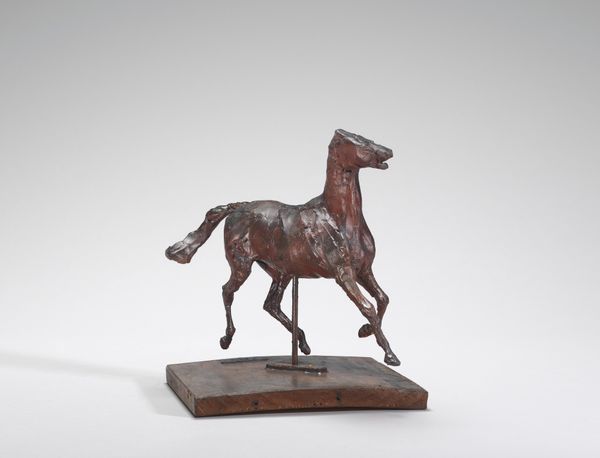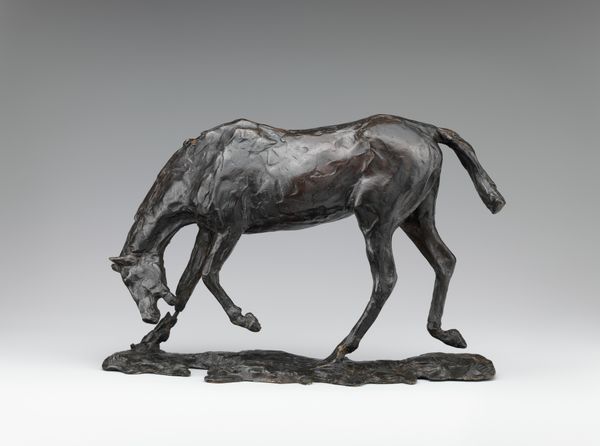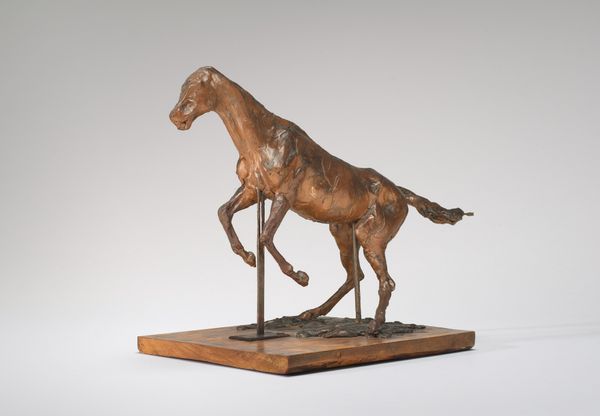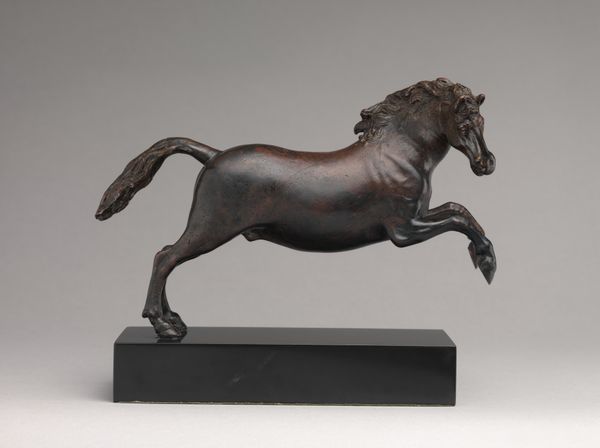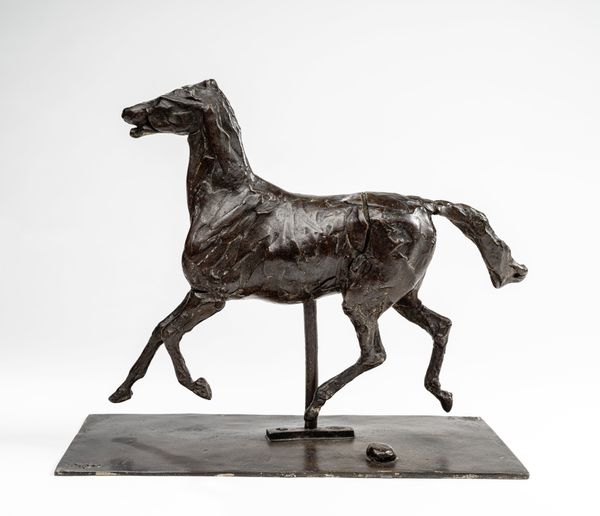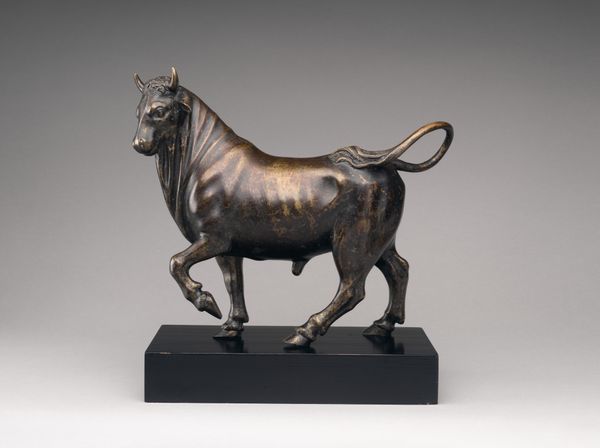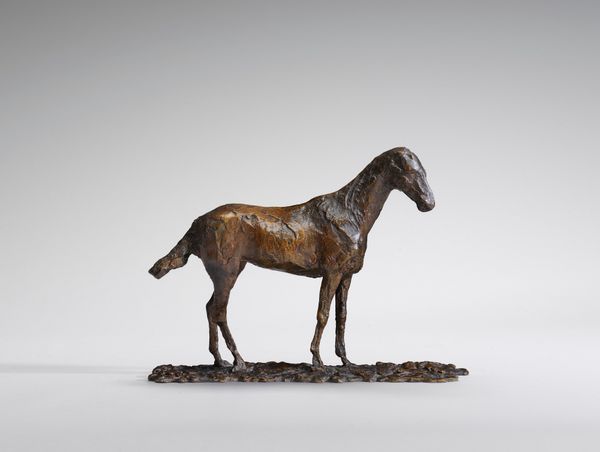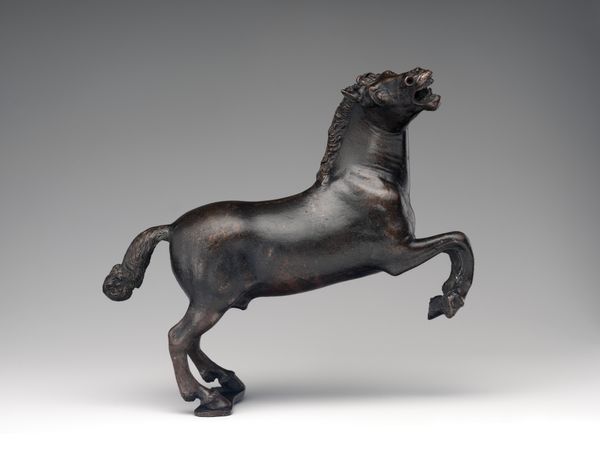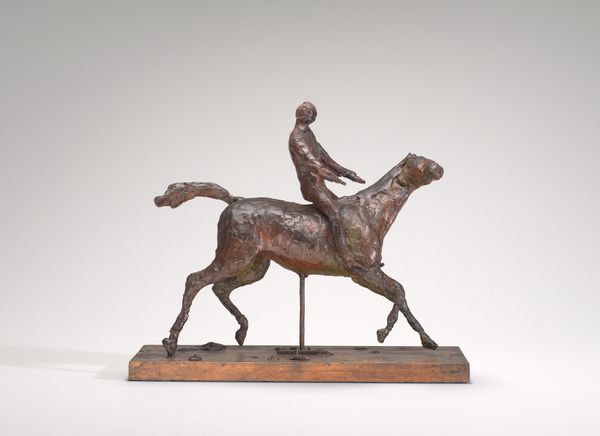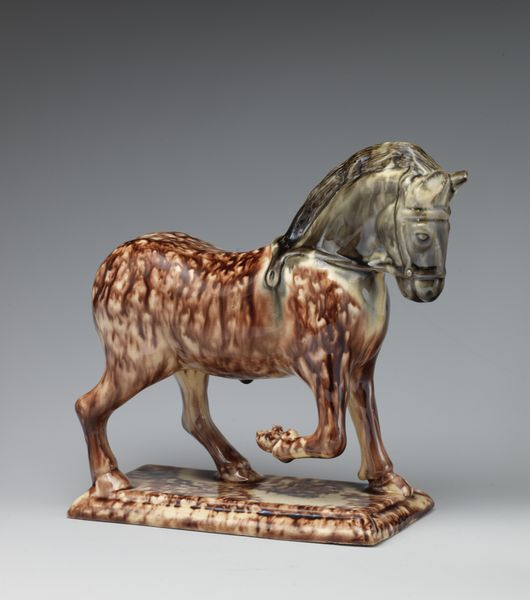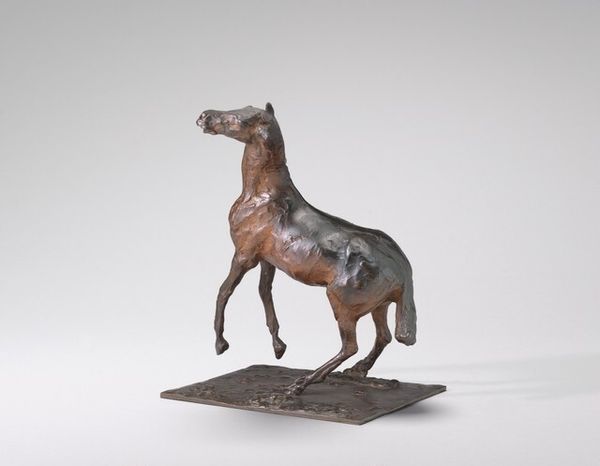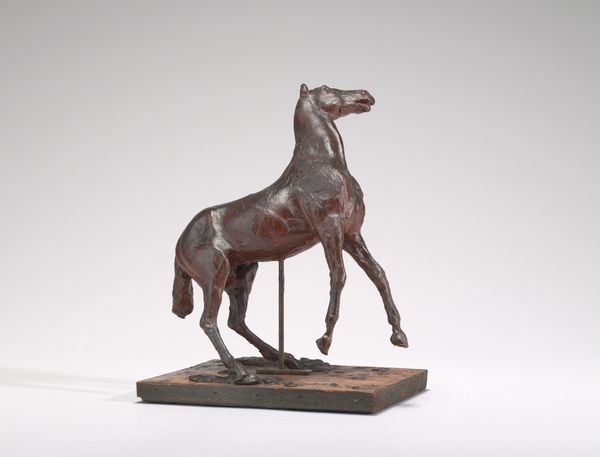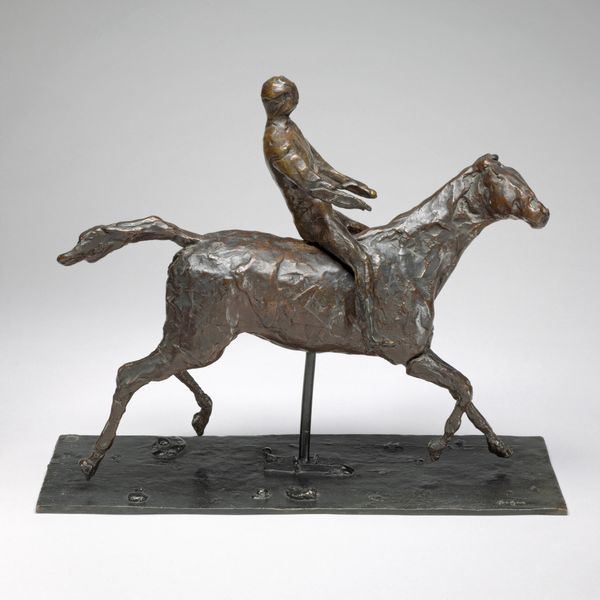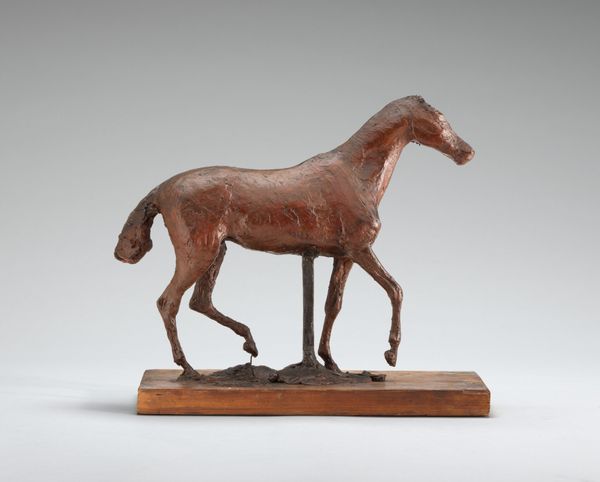
metal, sculpture
#
folk-art
#
animal
#
metal
#
landscape
#
sculpture
#
decorative-art
Dimensions: 43.2 × 69.2 ✕ 5.1 cm (17 × 27 1/4 ✕ 2 in.)
Copyright: Public Domain
Curator: The Alvin L. Jewell's circa 1860 copper sculpture "Running Horse Weather Vane" at the Art Institute exudes movement; it feels charged with a sense of liberated energy. Editor: It’s interesting to see a three-dimensional object representing freedom. My initial reaction focuses on its form: simplified yet dynamic, appearing both grounded and spirited in the material of weathered metal. Curator: These weathervanes, especially those shaped like animals, became popular cultural markers on barns and public buildings in rural America, reflecting the rise of a market culture. Its narrative ties into broader ideas about the rural landscape and how we can examine historical intersections between economics and artistic craft. Editor: Exactly! And the handcraft production of the copper suggests an interesting contrast between labor, the materials available, and the symbolism of the horse—strength, agricultural work, but also potential commerce. How do we understand the societal placement of these values? Curator: We should also examine gender roles within this landscape. While metalworking was typically a male-dominated craft, the appeal of the weathervane certainly would resonate in the gendered context of domesticity and the farm as the basis of a woman’s existence. It points to social expectations, perhaps of both labor and of looking outward towards the world. Editor: True, even though metal is usually linked with traditionally masculine jobs and its practical use in building. The craftsmanship seems important. We have the golden horse, which becomes almost an aspirational emblem of status and it’s built upon collective labor. Curator: Thinking through these dynamics allows us a broader sense of how this piece negotiates these competing discourses in American life during that period. Editor: I agree completely. It seems that the piece's existence serves a functional purpose and, perhaps unintentionally, creates this really rich social commentary by way of accessible production and use.
Comments
No comments
Be the first to comment and join the conversation on the ultimate creative platform.
